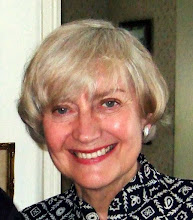WITCHCRAFT MANIA

With All Hallows’ Eve approaching, shops are bulging with supplies of witches’ hats and devils’ fangs in preparation for the Chelmsford Trick or Treat perambulations. The increasingly popular Hallowe’en craze, borrowed from America, may mean lots of fun - or annoyance - depending on your age, disposition or viewpoint.
Squadrons of skeletons and gangs of ghouls will take to the streets as youngsters come knocking on doors calling for ‘largesse’ or sweets accompanied by the odd shriek or cackle. All part of the fun nowadays; however, our history books covering the 16th century, indicate no mirth in even the slightest association with witchcraft and the Devil. Arrest, torture and even execution could have resulted. And Chelmsford Assizes were pivotal to this whole sorry witch craze.
Witchcraft has always been with us, entwined within Essex folklore. Many ordinary towns around Chelmsford were coloured by twin preoccupations of fear and superstition in the 17th century and the upsurge of witchcraft mania came when Henry VIII, who, mindful, of the Biblical command "Though shalt not suffer a witch to live" seems to have taken it literally. When Elizabeth l became queen after the death of half-sister Mary, her Parliament promulgated the new witchcraft legislation in 1563.
During that year, Londoners experienced a particularly pestiferous bout of plague. Seeking cures from the famous Essex "white witches", they came over the then border at Bow Bridge to seek the curative balms prepared by the Essex ‘wise women’. Very soon, however, these same women were accused of being in league with the Devil and his Black Arts, particularly if they owned a cat.
On a hot day in July 1566, most of the population of Chelmsford jostled for vantage points from which to view the first witchcraft trial. Three women from Hatfield Peverel, Elizabeth Francis, Agnes Waterhouse and her daughter Joan were on trial. On an elevated platform sat the inquiry board consisting of the Attorney General, Sir Gilbert Gerard and a judge of the Queen’s Bench, Sir John Southcote among other luminaries. The Assize Clerk wrote on a sheet of vellum "The Examination of Certain Witches at Chelmsford in the County of Essex before the Queen’s Majesty’s Judges this 27th day of July, being the second day of the Trial, Anno 1566."
This being the first notable witch trial since the passing of the Witchcraft Act, its importance was evident having brought such illustrious parliamentary judiciary to Chelmsford. Of the three women in the dock, two were dismissed, but the poor, 64-year-old Mistress Waterhouse was hanged in full view of Chelmsford’s citizens. Many more were to follow her fate over the next 150 years – a dreadful indictment in our county history.
By permission of Chelmsford Weekly News


0 Comments:
Post a Comment
Subscribe to Post Comments [Atom]
<< Home